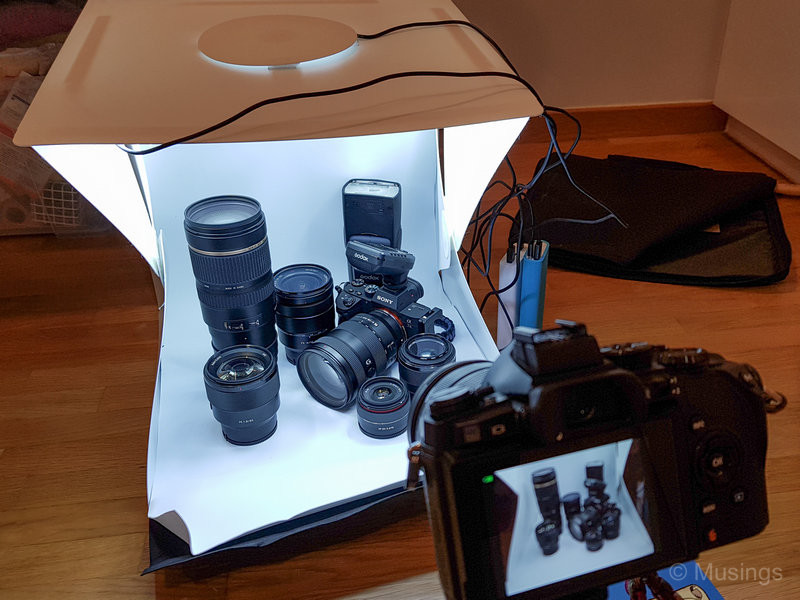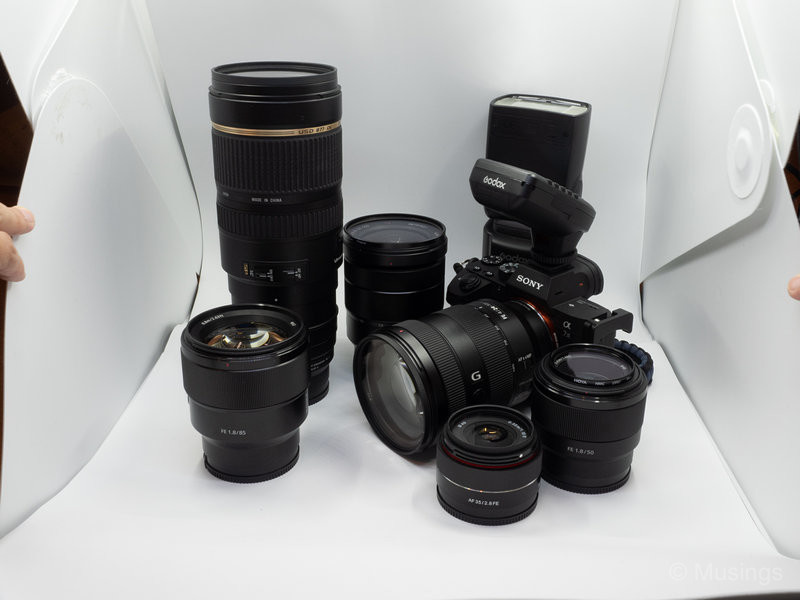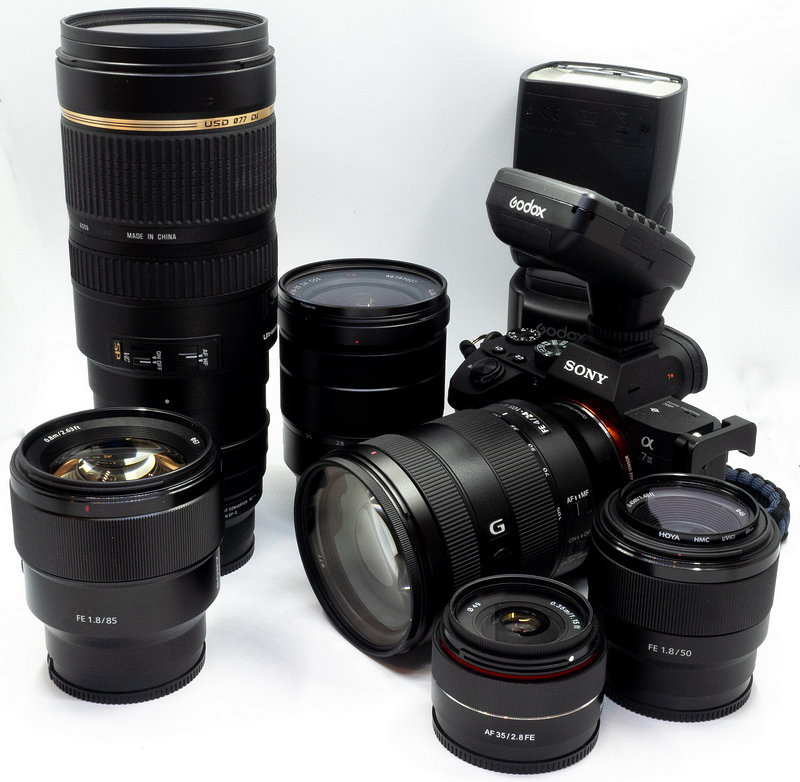I’m not actually sure if the type of gadget covered in this post should belong to photography-related accessories, or blogging! Specifically, after almost ten years of posts reflecting and ranting about one photography matter or another, I finally got round to thinking seriously about putting together a setup to take nicer product-styled shots of stuff I review about here on our blog. This is by no means a professionally-put together setup of course. We have no obligations or even inclination to ‘influence’ others to buy stuff since we are not affiliated to any commercial enterprise or social media agency. Our blog covers stuff that we pay for entirely out of our pocket, is privately maintained and paid for ourselves, and we write this blog largely for leisure and not for any other incentive.
So, my simple product photography home setup and comments:
A mid-size light box/tent. These come in different sizes, and are from $6 for small ones and upwards for the larger ones that can cost hundreds. To be candid, I don’t think one should be paying more than $50 for a 50cm cube – unless it comes with a lot of trimmings, e.g. support struts, or numerous light sources. Mine is a 50cm x 50cm cube. There are bigger ones of course which can fit larger-sized or more products in a shot, but the mid-size and larger tents get very top-heavy. If you take a look at the picture below, you’ll see that the tent roof is already sagging a little under its weight. I’ll have to figure out a way to provide external support for the tent roof at some point.
The tent is foldable, and is propped up on each side by magnets. The magnets that came with my tent were not nearly strong enough to keep the sides fastened, so I had them removed and replaced by velcros from Daiso. Some of the other light tents I’ve seen are secured by buttons: which might be even more secure.
Most of the professionally-done light tents are set-up with strong externally mounted light sources. My light tent came with a single LED light strip which didn’t provide nearly sufficient illumination on its own. So, I added three additional LED light strips that were bought for cheap on eBay, and hooked them up to portable power sources – i.e. two of my Xiaomi powerbanks that you can also see in the picture below.
My kit came with two backdrops: one white, and another black. I’ve been using the white backdrop exclusively so far as cameras and lenses are routinely pained black. But I’ll tinker around with the black backdrops soon to see how different the show-case product pictures look.
A large painting brush is on hand to dust of particles and dirt on each item. Dirt and dust have a very bad habit of showing up very visibly in these photos!
The camera is set up on a mini-tripod, on timer, lowest ISO, and at around f22 or thereabouts for maximum depth of field.
The pictures are taken in RAW, and adjusted in post-processing: basically, I increase the whites, reduce the blacks, tweak shadows and highlights. For crowded product shots like the below, the gaps in the backdrop can be seen. So, I have to further brush-out those bits in Photoshop.
Couple of photos to show the process:



Recent comments